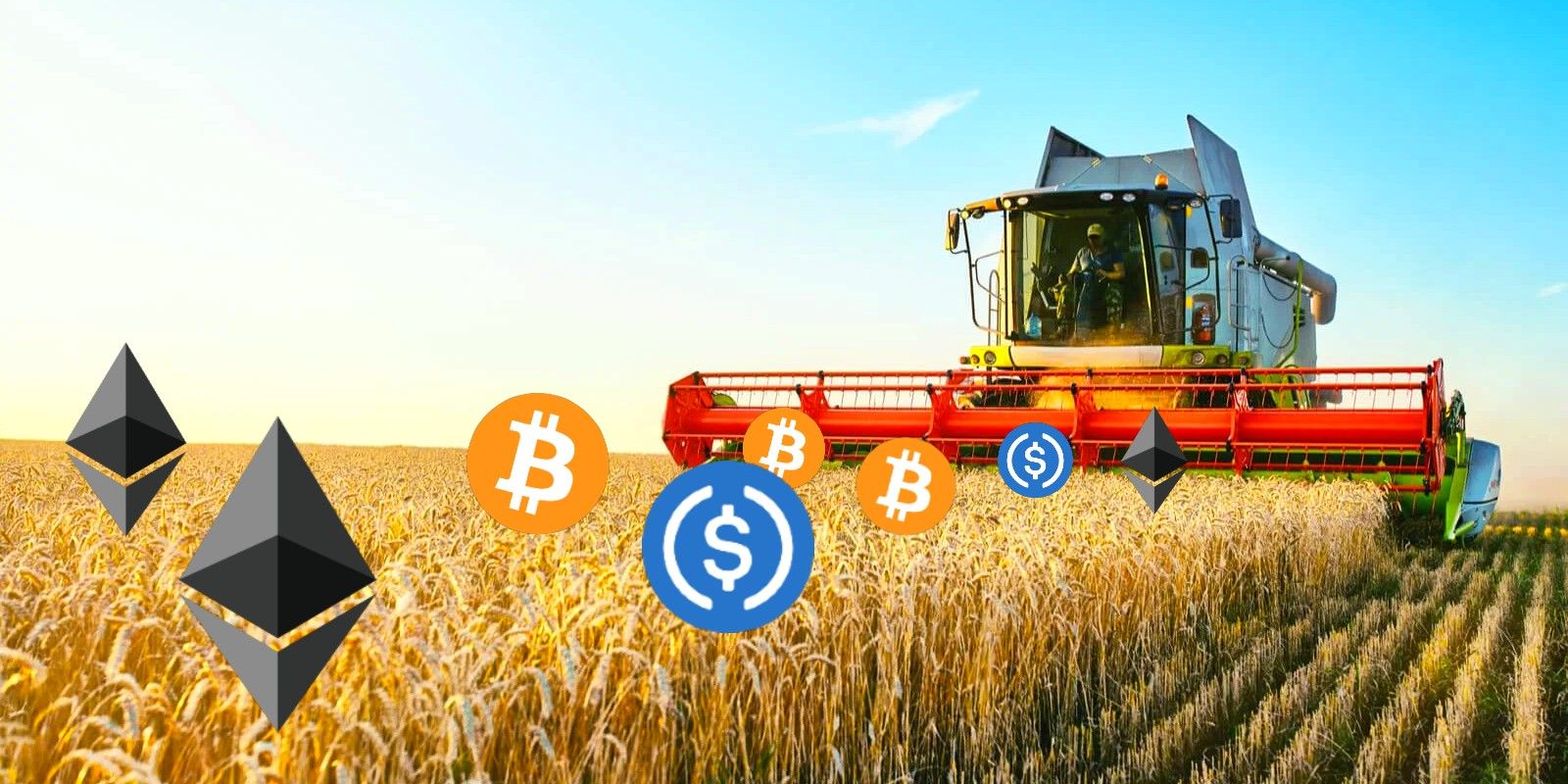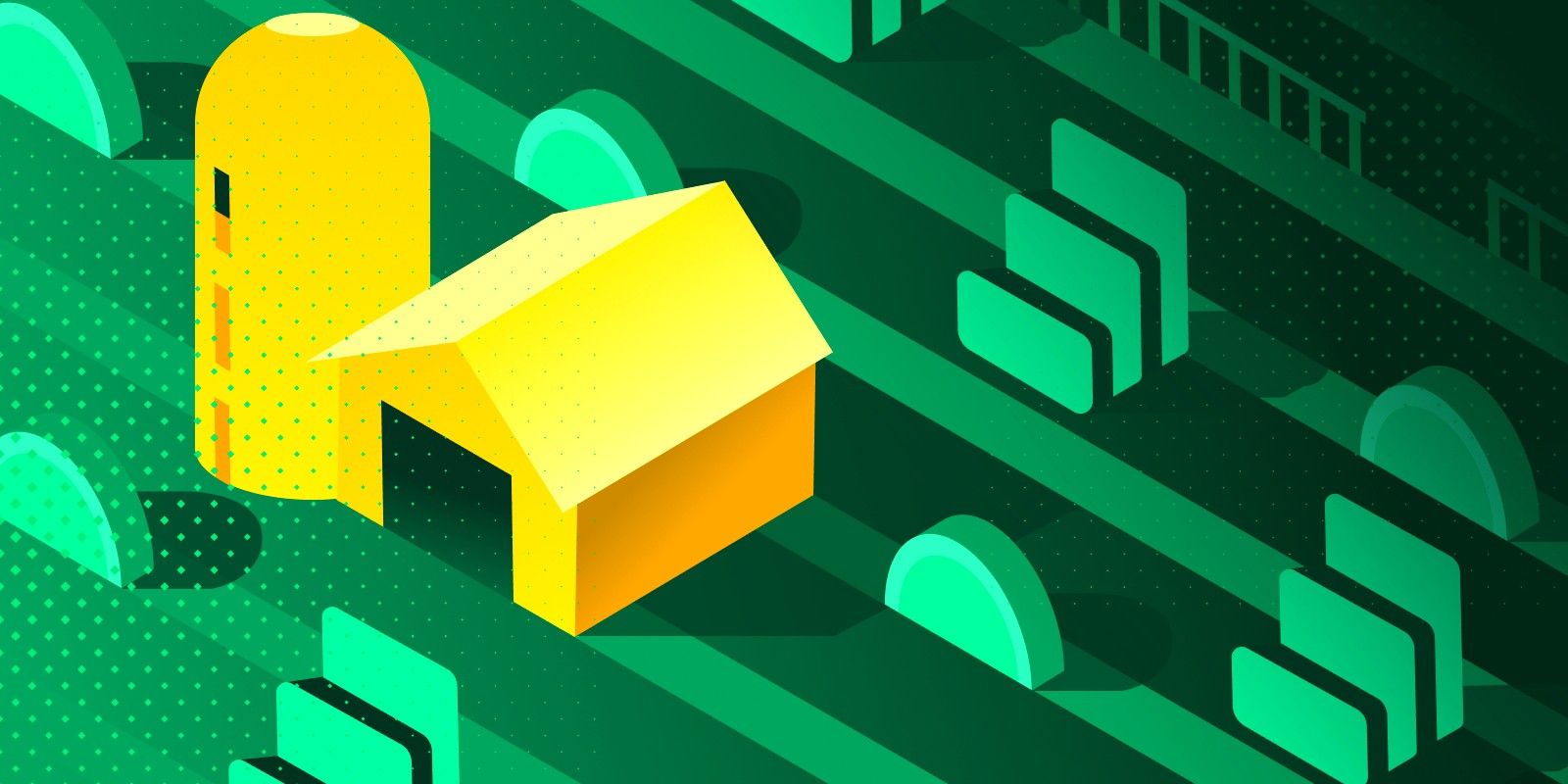Decentralized finance brings many innovations and new ways to generate income, and some people have figured out how to “farm” crypto yields.
Many applications in decentralized finance (DeFi) offer passive income, or ‘yield,’ in return for depositing cryptocurrencies into their protocols, and people who develop strategies for moving crypto across DeFi protocols to maximize their returns are called ‘yield farmers.’ DeFi yields constantly fluctuate, so it makes sense to ‘rotate’ the deposits across protocols to chase the highest yields. This requires highly sophisticated strategies and advanced knowledge of DeFi to work, which are guarded jealously to maintain profitability.
One of the biggest innovations in DeFi was the lending and borrowing app, which allows users to deposit crypto into a pool and either lend it out to other users in return for interest payments or lock it up as collateral to take out a loan in another cryptocurrency. DeFi protocols are all interoperable via blockchain smart contracts, allowing developers to chain multiple actions across several DeFi apps to construct new financial services. Also, newly launched protocols will offer high rewards for people willing to risk depositing their crypto in return for the high rewards, but there is also a very high risk that the protocol will become insolvent, collapse, or turn out to be a crypto rug pull scam.
Binance Academy explains that yield farming is very complex due to DeFi protocols having variable APY rewards, and maximizing returns frequently involves ‘rotating crops’ across the highest-paying protocols. Yield farming strategies are sophisticated and guarded very closely, as yield farming strategies become less profitable when more people use the same strategy. Yield farming usually relies on ‘liquidity pools,’ which are large pools of cryptocurrency used to facilitate financial services, which is how decentralized exchanges (DEXes) work. Liquidity pools have to provide rewards to their liquidity providers (LPs), which is where yield farming rewards come from.
Yield Farming Is Difficult And Risky
It isn’t easy to get into yield farming, nor is it always safe to maintain. Higher APYs are almost always associated with a higher risk of loss. New DeFi protocols with shallow liquidity pools are more prone to high volatility and the possibility of collapse. Yield farmers have to manage risk and reward actively while keeping tabs on which DeFi protocols offer higher yields to move their tokens to the next highest-paying pool. Yield farmers who keep their crypto inside a high APY pool for too long risk the mistake of getting wrecked and losing some or all of their crypto.
Yield farming is a well-known term in cryptocurrency, but it’s also challenging to get into and can lead to losses if the yield farmer isn’t careful with their strategy. Yield farming is very sophisticated and usually requires knowledge of smart contract development and connecting multiple DeFi protocols to maximize returns. Yield farmers also have to rely on bots and blockchain oracles to know when it is time to rotate their crypto crops, and they have to use risk management and hedging strategies to mitigate their cryptocurrency losses.
Sources: Binance Academy
Read More: news.google.com










 Bitcoin
Bitcoin  Ethereum
Ethereum  Tether
Tether  XRP
XRP  Solana
Solana  Dogecoin
Dogecoin  USDC
USDC  Cardano
Cardano  Lido Staked Ether
Lido Staked Ether  TRON
TRON  Avalanche
Avalanche  Sui
Sui  Wrapped stETH
Wrapped stETH  Toncoin
Toncoin  Shiba Inu
Shiba Inu  Chainlink
Chainlink  Wrapped Bitcoin
Wrapped Bitcoin  Stellar
Stellar  Hedera
Hedera  Polkadot
Polkadot  WETH
WETH  LEO Token
LEO Token  Bitcoin Cash
Bitcoin Cash  Uniswap
Uniswap  Litecoin
Litecoin  Pepe
Pepe  Hyperliquid
Hyperliquid  Wrapped eETH
Wrapped eETH  NEAR Protocol
NEAR Protocol  Ethena USDe
Ethena USDe  USDS
USDS  Internet Computer
Internet Computer  Aptos
Aptos  Aave
Aave  Mantle
Mantle  POL (ex-MATIC)
POL (ex-MATIC)  MANTRA
MANTRA  Cronos
Cronos  Ethereum Classic
Ethereum Classic  Render
Render  Bittensor
Bittensor  Monero
Monero  Tokenize Xchange
Tokenize Xchange  Dai
Dai  Artificial Superintelligence Alliance
Artificial Superintelligence Alliance  Filecoin
Filecoin  Arbitrum
Arbitrum